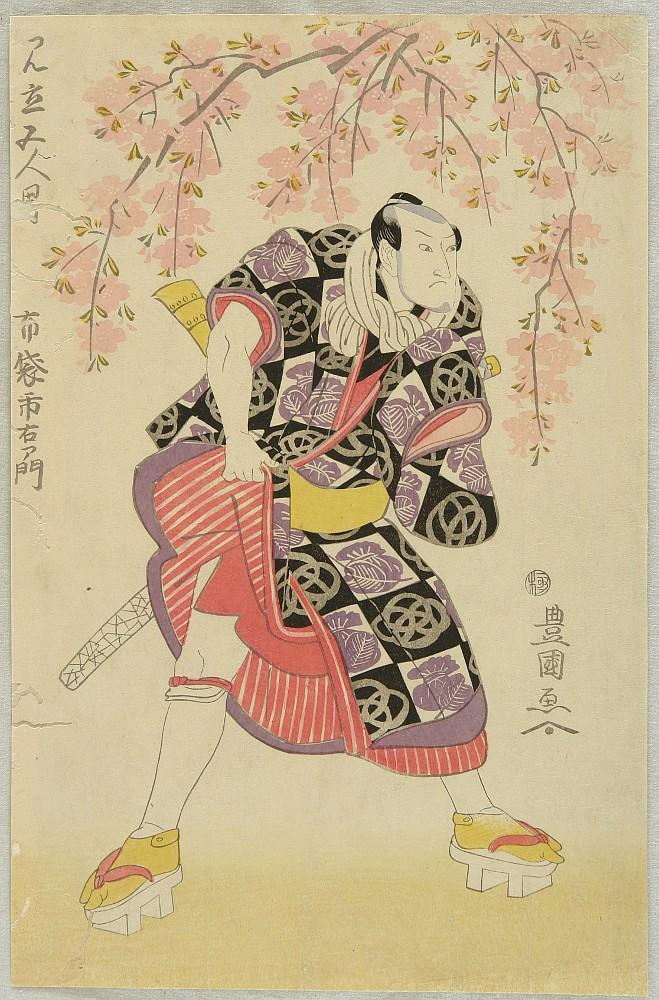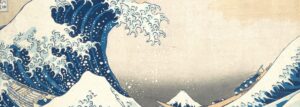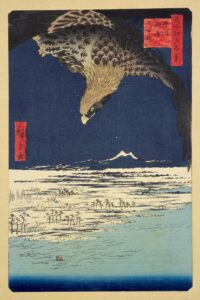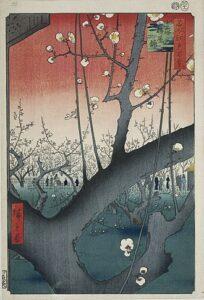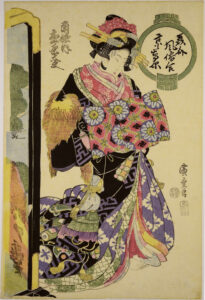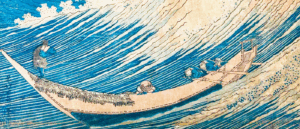We’ve all known the famous Utagawa Hiroshige if we know anything about Japanese woodblock art. This master of ukiyo-e crafted several spectacular woodblock art pieces. And in particular, his vertical format series, The One Hundred Famous Views of Edo, comes close to no other. But did you know, that Utagawa Hiroshige was in fact not born with that name? That’s right my friends! This woodblock artist of the Edo Period was in fact born under the name Andō Tokutarō [1]. So what made him change that name?
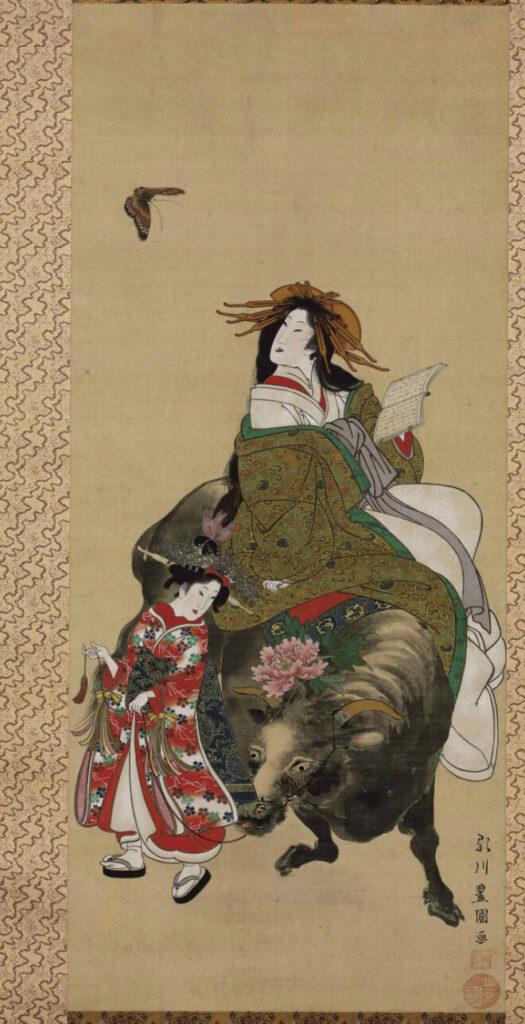
Well, here begins a mesmerizing story of the Utagawa School of ukiyo-e that was born in the Edo period. Starting with the name first, there’s a long, ongoing tradition in the Japanese culture of taking on a new name when you begin your career, especially as an artist. And this name often acknowledges who your teacher was [2]. So as you probably have figured out by now, this leads to the formation of entire lineages of artists, where the name is passed down from teacher to student, and when the student becomes a teacher, they pass the name down further, and so on and so forth.
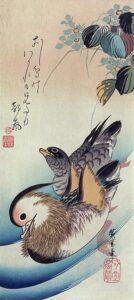
And sometimes, just sometimes, we can trace stylistic traits that are being passed down through these generations of artists within a school [3]. Because, really, students learning from their teachers were basically the nuts and bolts of the art business, especially for Japanese woodblock art when it became prevalent in the Edo period. Speaking of artists who took on the Utagawa name, there were three main types of prints that they specialized in: bijin-ga (pictures of beautiful women) [click to read our fascinating article about the geisha beauties of Edo and their depiction in woodblock prints], uki-e (perspective pictures), and warrior prints or imagery of kabuki actors playing any such role[4].
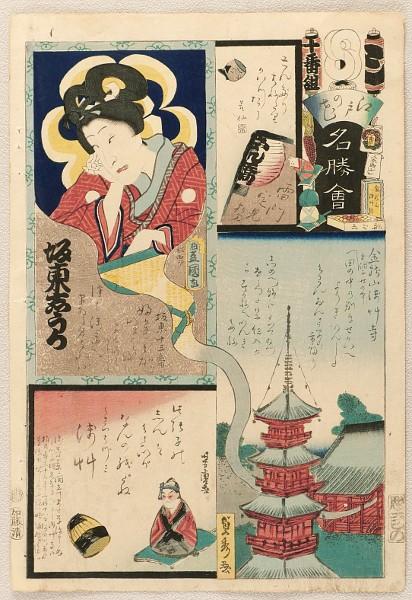
Now coming back to Hiroshige himself here, the artist was a student at the Utagawa School during his early years of making Japanese woodblock art. And his style in several prints of the series One Hundred Famous Views of Edo is a tribute to just that. Filled with perspective pictures and landscapes, you could say that Hiroshige was one to popularize the Utagawa name [1].
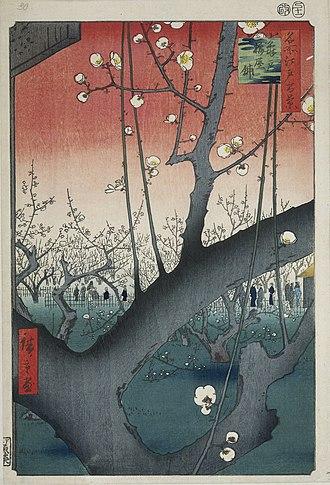
But who really found the Utagawa school of ukiyo-e? Short Answer: Utagawa Toyuharu. The artist was one of the first few active in Japanese woodblock art in the late 18th century. The artist himself was best known for his pictures of kabuki actors, landscapes, and what was known as perspective pictures – a legacy that he passed on to the school [4]. Toyuharu had basically mastered how to draw receding images that look different when viewed from separate angles in 2D, a skill he learned from the European material that made its way into Japan when they had closed their borders for international trade during the Edo period [3].
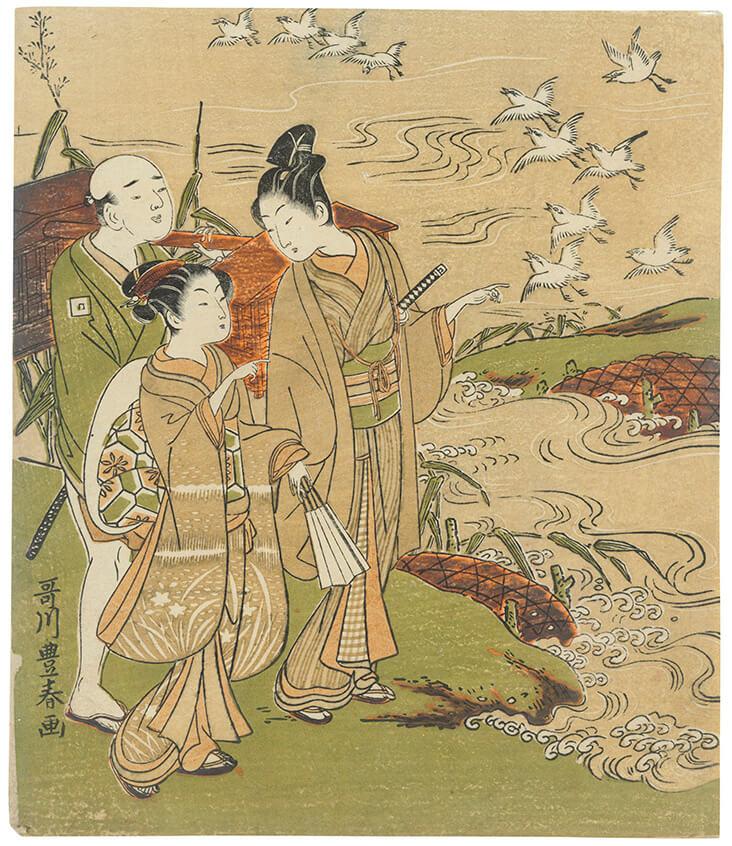
With his prints of kabuki actors, in particular, Toyoharu brought forth a theatrical form that was still in the background when he started sketching them. This form of theater was much more boisterous and melodramatic than the older theatrical forms and goes hand in hand with the Utagawa School even today. As a matter of fact, almost half of all ukiyo-e prints that we see today belong to members of the Utagawa School [2].
As of what’s known from history, the Utagawa School had 151 students, amongst which the famous ones were Hiroshige, Kunisada, Kuniyoshi, and Yoshitoshi [2].
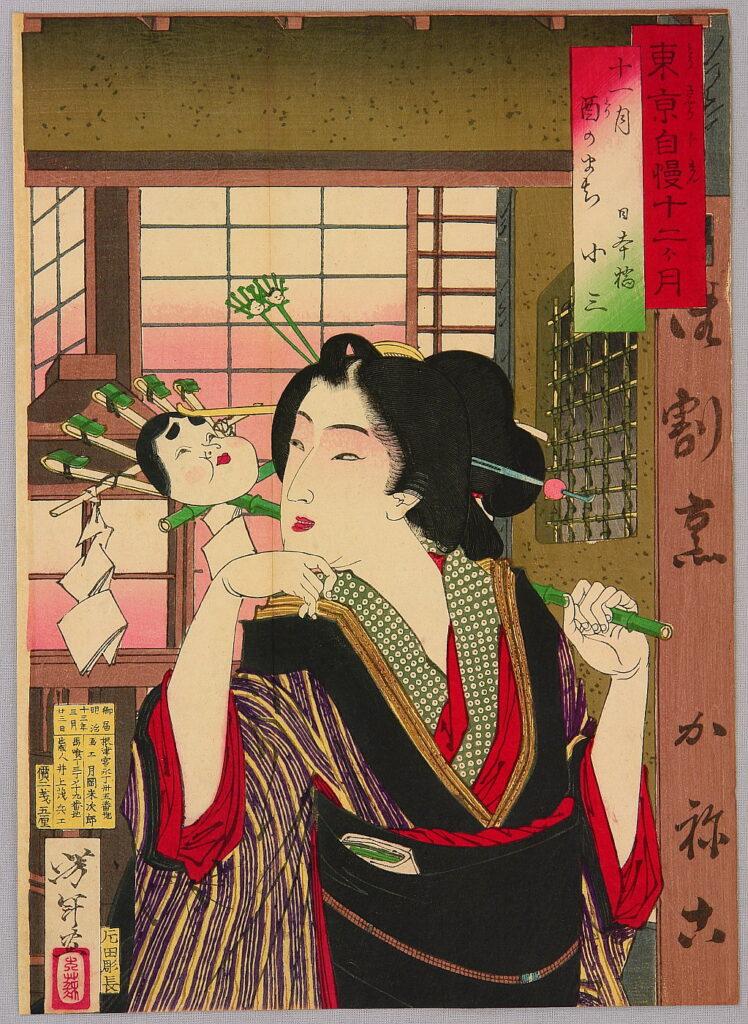
And if you dive even deeper into the history of the Utagawa School, it’s going to start to seem like Hogwarts from Harry Potter. Students were given the Utagawa name if their skill was approved by the teacher. The school even had a “Year ball” symbol of sorts to represent them [5].
So now you’d know a lot more about any Japanese woodblock that you see or buy with Utagawa signed on it!
To see our Full collection of woodblock prints for sale, be sure to click here. Find your own Utagawa School Treasure!
And to sell Japanese woodblock prints, get in touch here. We are always happy to research the print for you and provide any insight into the artist who created your treausre.
Links
[1]Biography of Utagawa Hiroshige in: Forbes, Andrew; Henley, David (2014). 100 Famous Views of Edo. Chiang Mai: Cognoscenti Books. ASIN: B00HR3RHUY
[2] Johnson, Ken, “Fleeting Pleasures of Life In Vibrant Woodcut Prints”, art review in The New York Times, March 22, 2008. Retrieved March 26, 2008
[3] “Lines of Descent: Masters and Students of the Utagawa School”. asianartnewspaper.com. Retrieved 2019-11-20.
[4] Amatori, Franco; Jones, Geoffrey, eds. (2003), Business History around the World, Cambridge University Press, pp. xvii–xviii, doi:10.1017/cbo9780511512100.001, ISBN 9780511512100
[5] Heather. “The Utagawa School: Masters and Students.” Asian Art Newspaper, 3 June 2021, https://asianartnewspaper.com/lines-of-descent-masters-and-students-of-the-utagawa-school/.

